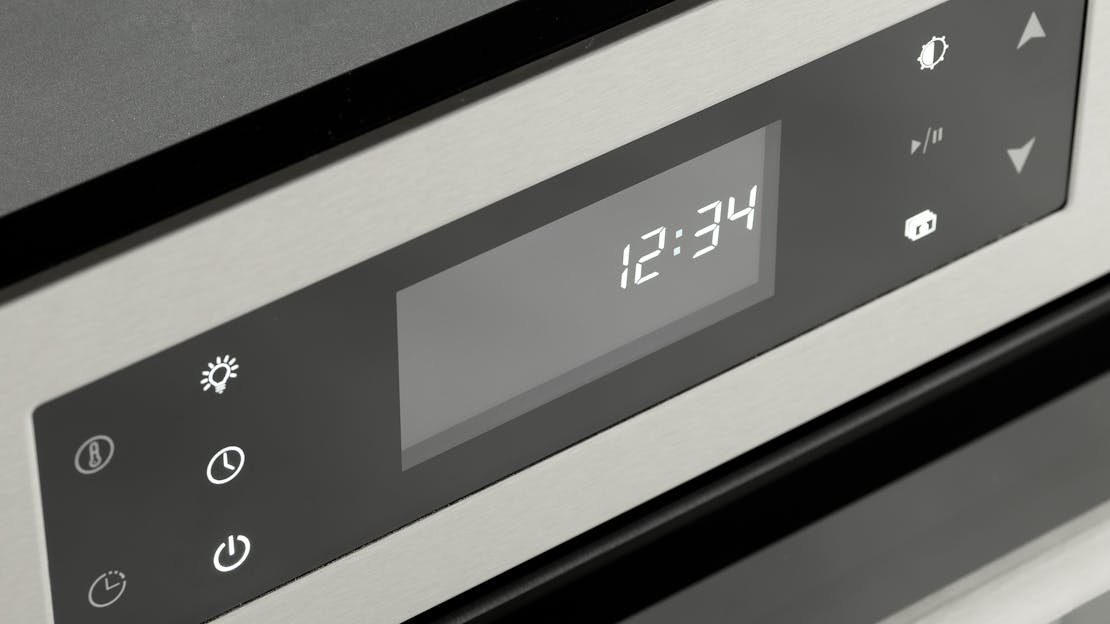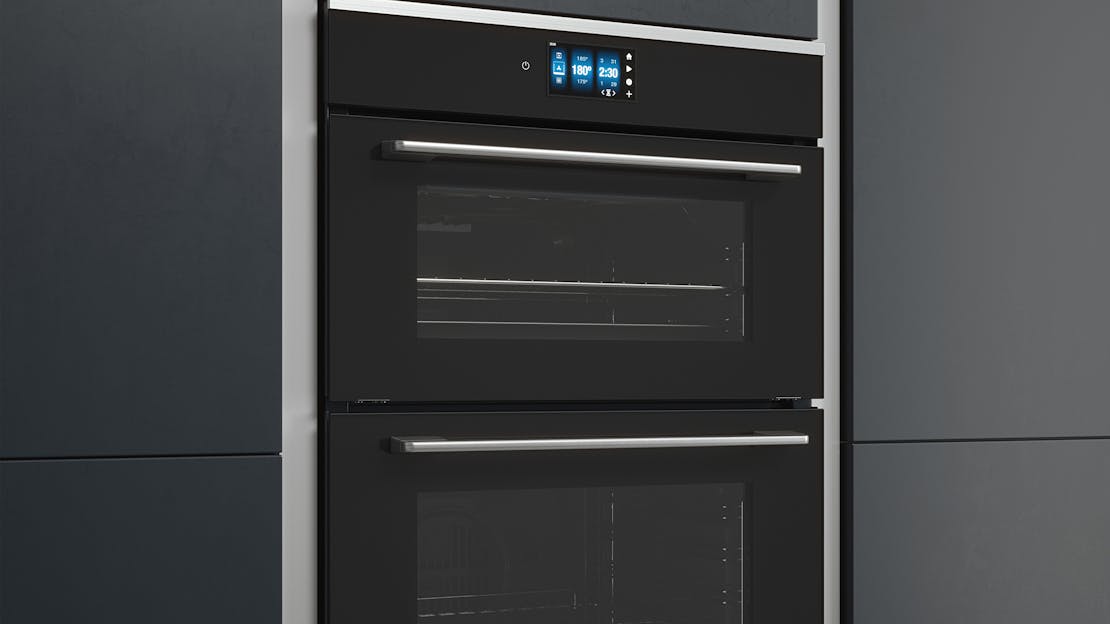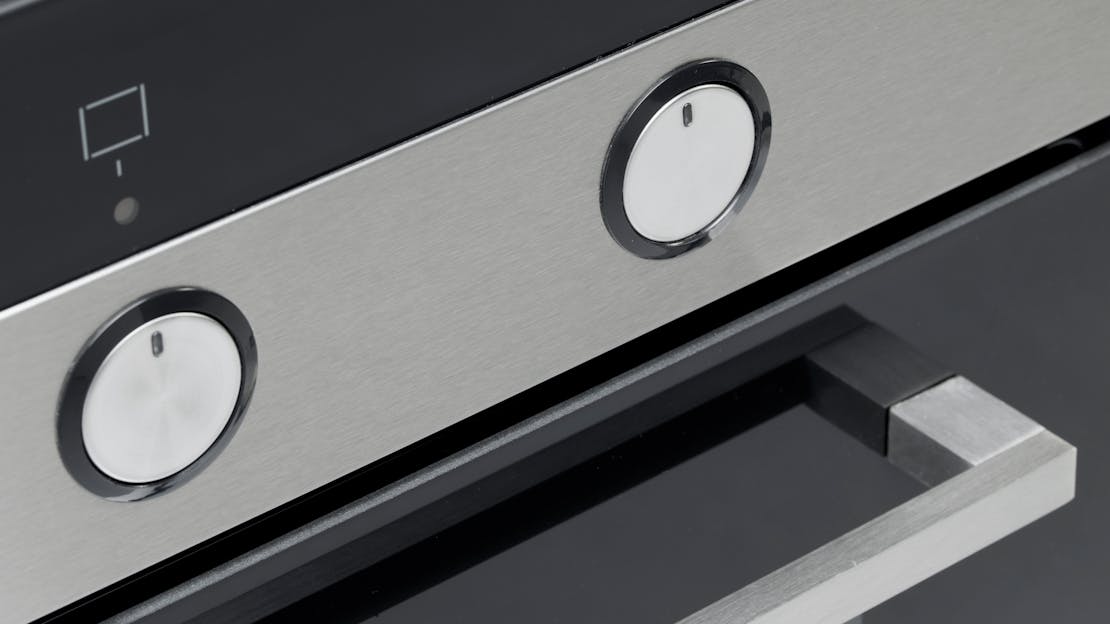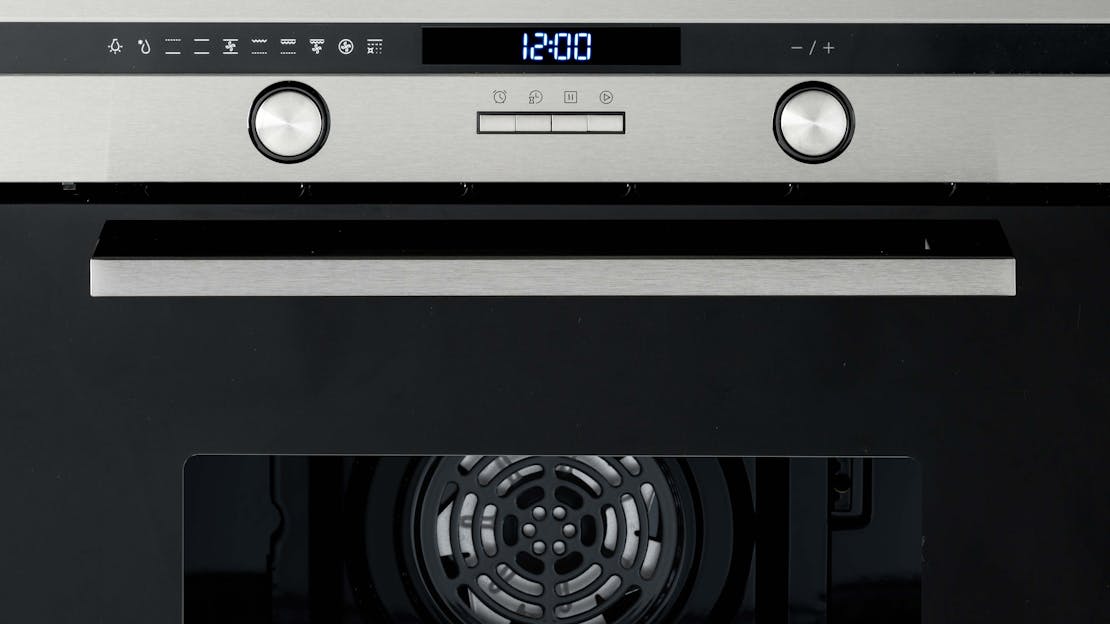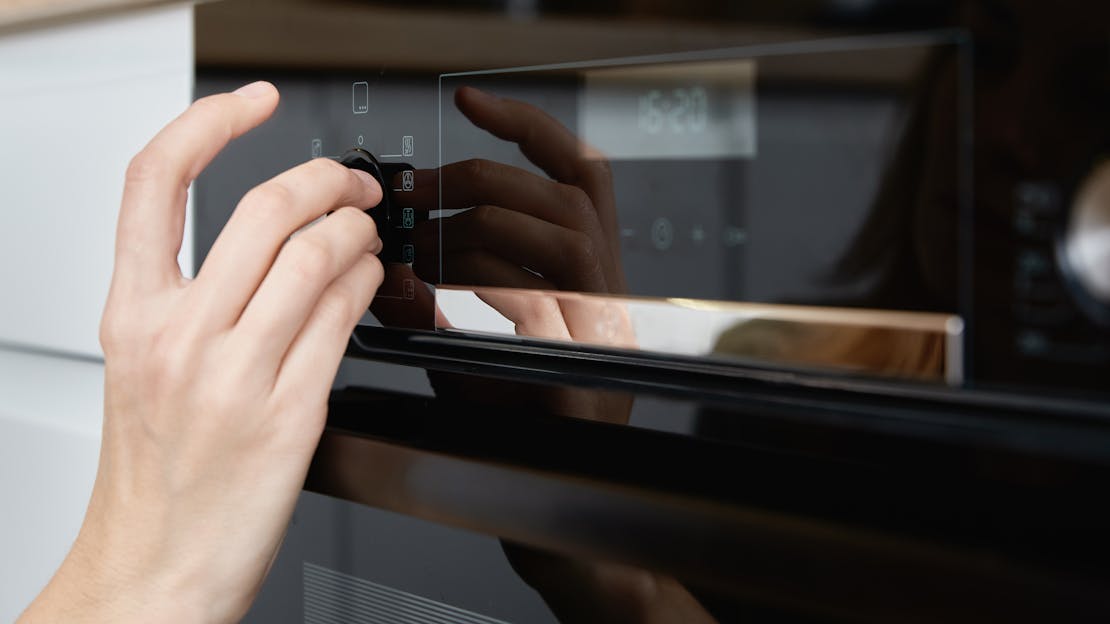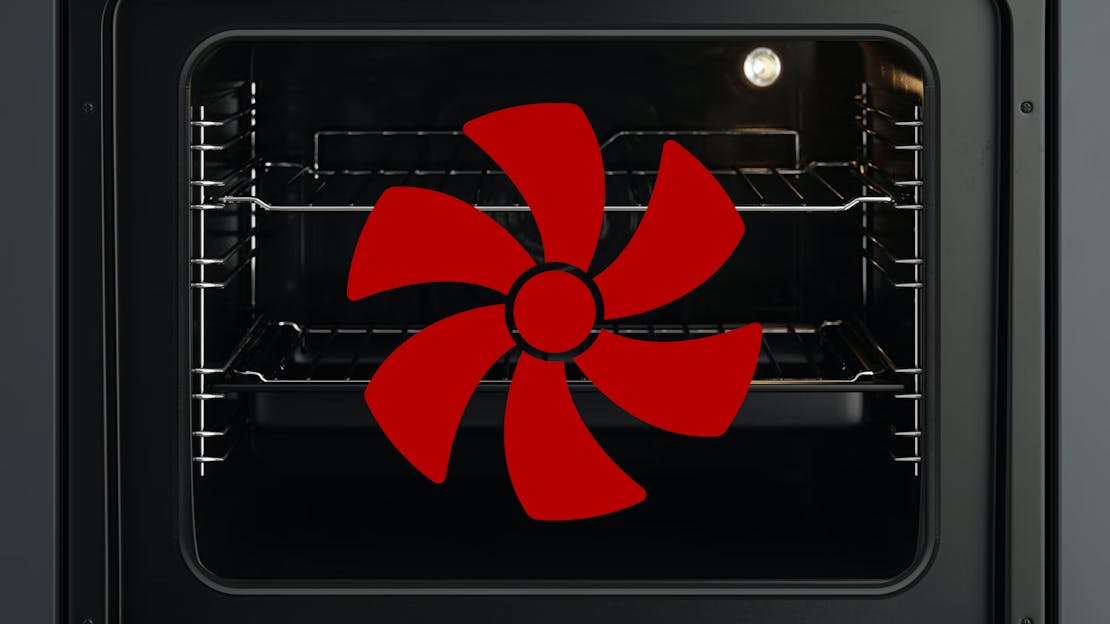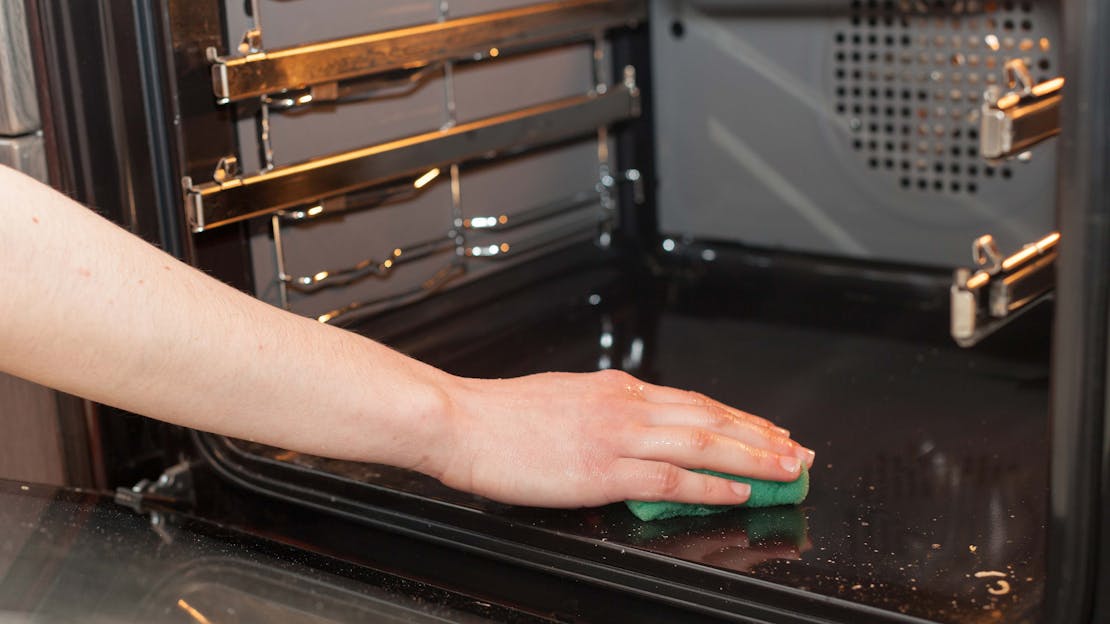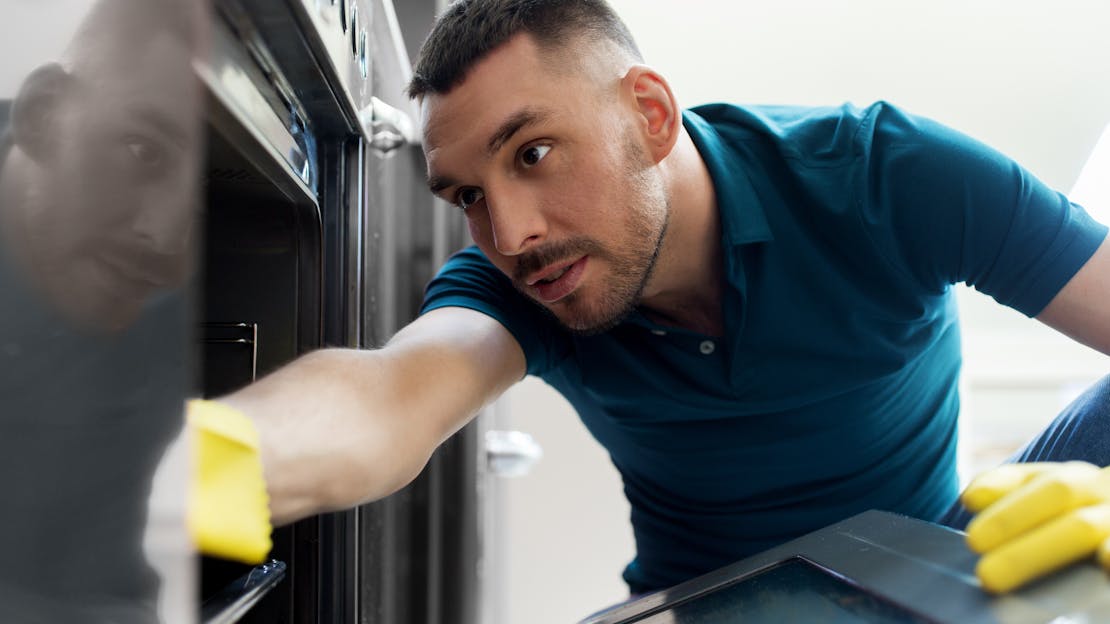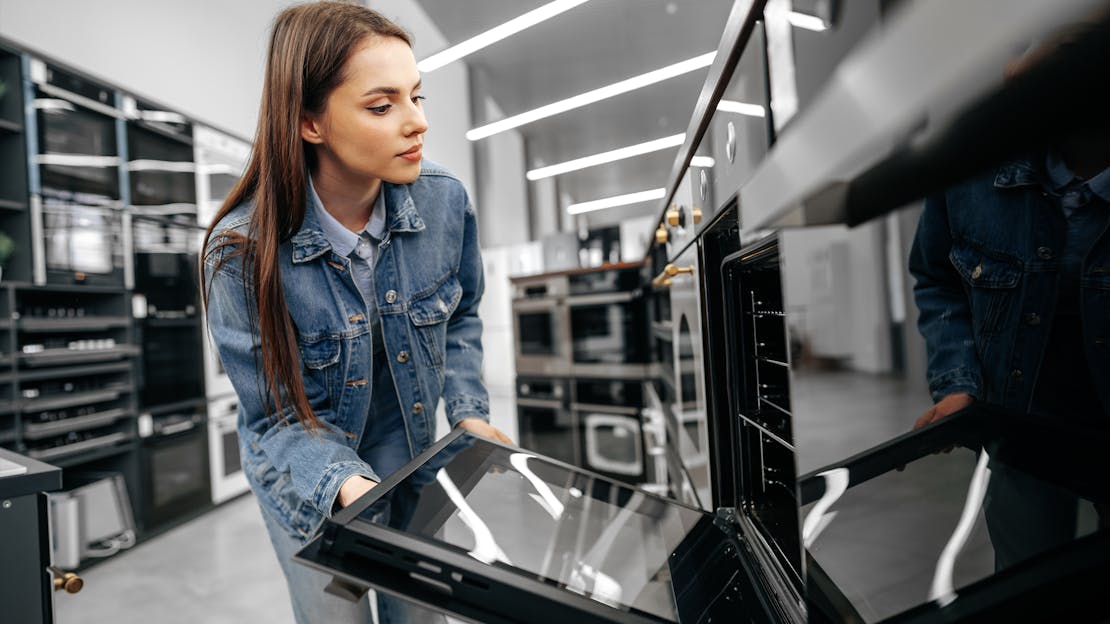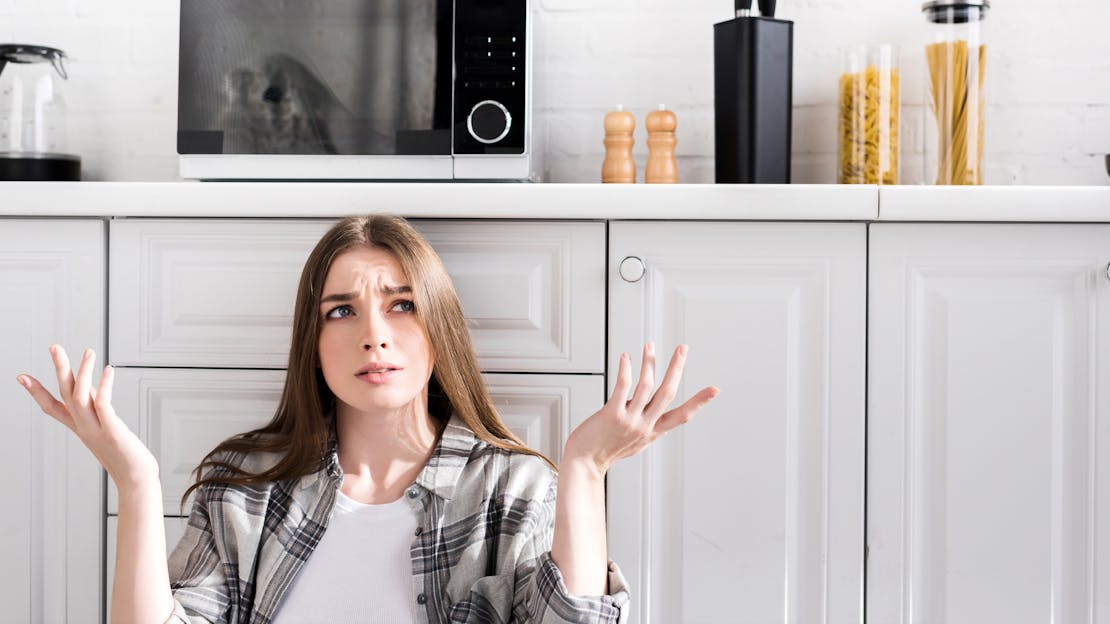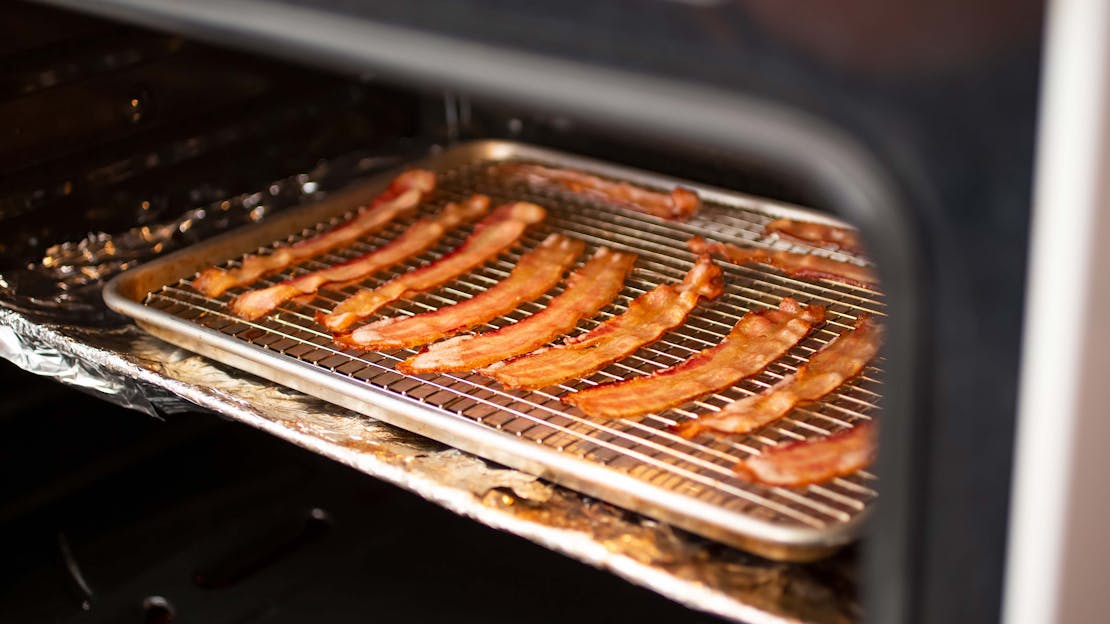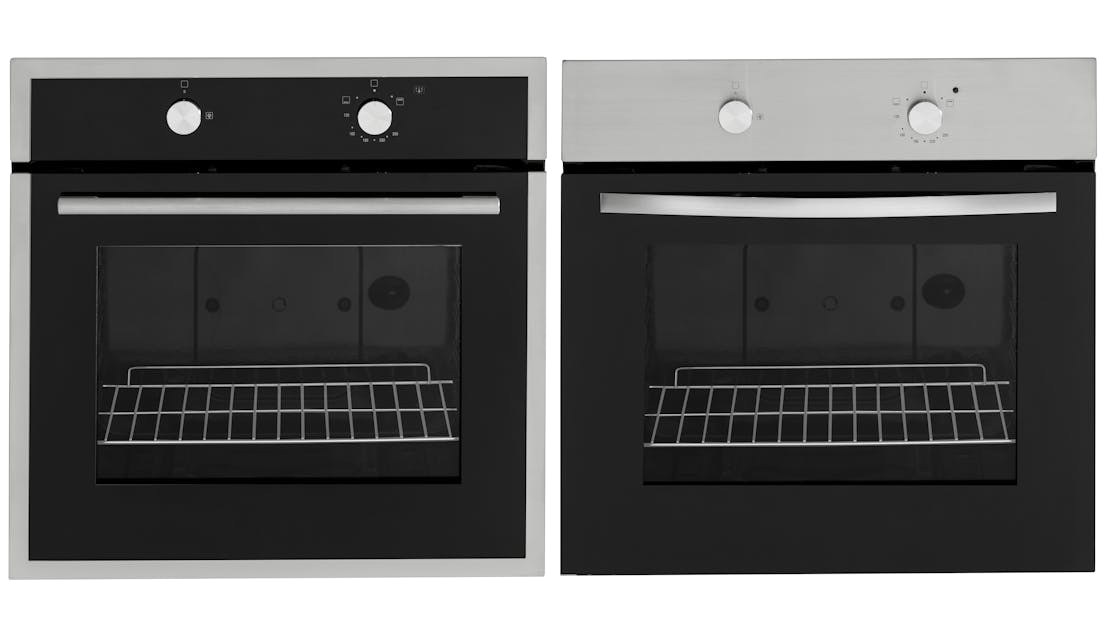
The Ultimate Guide to Gas Ovens
Welcome to the ultimate guide to gas ovens, where we embark on a journey through the world of culinary innovation and convenience. Gas ovens have been a cornerstone of kitchens for generations, offering a versatile and reliable cooking experience. In this comprehensive guide, we'll delve into the history and evolution of gas ovens, explore their advantages and disadvantages, and provide you with everything you need to know about selecting, installing, and maintaining these kitchen appliances. Whether you're a seasoned home chef or a cooking enthusiast, this guide will equip you with the knowledge and insights to master the art of cooking with gas ovens and elevate your culinary creations to new heights.
Introduction to Gas Ovens
Brief History and Evolution of Gas Ovens:
The use of gas for cooking can be traced back to the early 19th century when the development of gas as an energy source gained prominence during the Industrial Revolution. Initially, gas ovens were primarily used in commercial and industrial settings. They provided a more efficient and controlled way of cooking compared to open fires or wood-burning stoves.
However, it was only in the late 19th and early 20th centuries that gas ovens began to make their way into households in the United Kingdom. The introduction of domestic gas lines and the availability of gas as a household fuel source led to the development of gas ovens designed for home kitchens. These early gas ovens were relatively simple, often featuring a single burner at the bottom for baking and roasting.
Over the years, gas ovens have undergone significant improvements and innovations. The evolution of gas ovens has seen the development of features such as temperature control knobs, multiple burners for more precise cooking, oven lights, and digital displays for accurate temperature monitoring. Today, gas ovens come in various types and models, catering to a wide range of cooking needs and preferences.
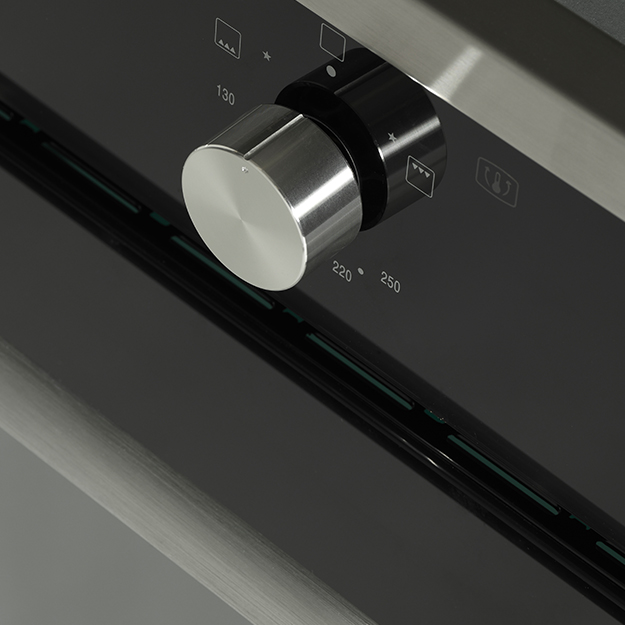
Pros and cons of Gas Ovens
Pros of Using Gas Ovens
- Quick and Even Heating: Gas ovens heat up quickly, allowing for faster preheating times compared to some electric ovens. They also provide even heat distribution, which is essential for consistent baking and roasting results.
- Precise Temperature Control: Gas ovens offer precise temperature control, making it easier to achieve specific cooking temperatures. This accuracy is especially important for delicate recipes that require precise heat levels.
- Moist Cooking Environment: Gas ovens introduce moisture into the cooking chamber, which can help retain the moisture in your dishes. This is particularly beneficial for baking bread and roasting meats, as it can result in a crisp crust and juicy interior.
- Cost-Efficient: Natural gas is often less expensive than electricity, making gas ovens a cost-effective option for cooking and baking. This can lead to savings on utility bills over time.
- Reliability during Power Outages: Gas ovens can operate during power outages, as they do not rely on electricity for heating. This can be crucial during emergencies or when you need to cook or bake in adverse conditions.
Cons of Using Gas Ovens
- Initial Installation Cost: Installing a gas line if you don't already have one can be expensive. This initial cost can deter some homeowners from choosing gas ovens.
- Carbon Monoxide Risk: Gas ovens produce small amounts of carbon monoxide during operation. While this is typically not a concern in well-ventilated areas, it's essential to ensure proper ventilation and safety precautions.
- Limited Availability: In some regions, natural gas may not be readily available, making it difficult to use gas ovens without relying on propane or other fuel sources.
- Hot Cooking Environment: Gas ovens can create a hotter cooking environment compared to electric ovens. While this is advantageous for some recipes, it can be a disadvantage for others, such as delicate pastries that require a cooler setting.
In summary, gas ovens have come a long way since their inception, offering many advantages such as quick and precise heating, cost-efficiency, and reliability during power outages. However, they also have disadvantages, including initial installation costs and the need for proper ventilation. When choosing a gas oven in the United Kingdom, it's essential to consider your cooking needs, budget, and the availability of gas in your area.
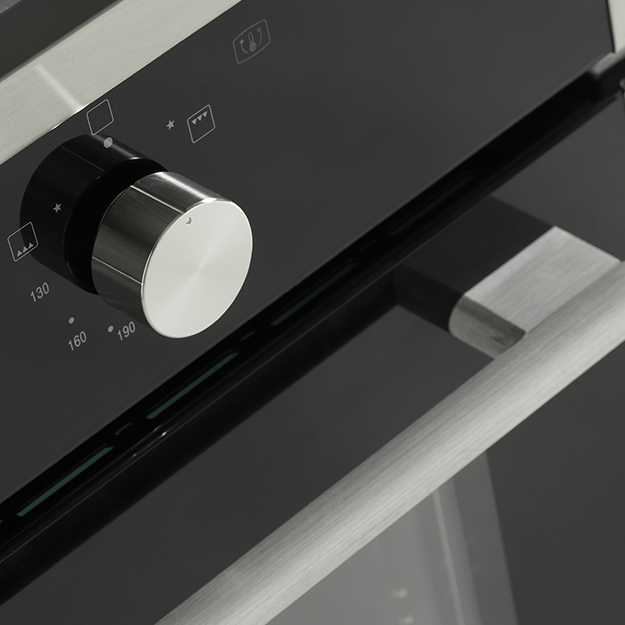
Types of Gas Ovens
Conventional Gas Ovens:
Conventional gas ovens represent the most basic type of gas ovens available. They feature a single heating element at the bottom, responsible for heating the oven chamber. These ovens rely on natural convection for heat distribution, where the hot air rises, creating a temperature gradient within the oven. As a result, cooking can be somewhat uneven, with the upper part of the oven being hotter than the lower part. Nevertheless, conventional gas ovens are known for their simplicity and affordability, making them a popular choice for those on a budget.
Convection Gas Ovens:
Convection gas ovens are equipped with a fan and an additional heating element, typically located at the rear of the oven. The fan circulates hot air throughout the oven, ensuring even heat distribution. This leads to more consistent and efficient cooking, with reduced cooking times. Convection ovens are highly versatile and suitable for baking, roasting, and grilling. They are particularly valued for their ability to achieve perfectly browned and crispy dishes. While they tend to be more expensive than conventional ovens, their cooking performance and versatility make them a preferred choice for home cooks and professional chefs alike.
Self-Cleaning Gas Ovens:
Self-cleaning gas ovens come with a convenient self-cleaning function that employs high temperatures to incinerate food residues and spills. Two common self-cleaning mechanisms exist:
High-Heat Self-Cleaning: This method utilises extremely high temperatures (typically around 800°F or 427°C) to turn food remnants into ash, which can be easily wiped away after the cleaning cycle.
Steam-Cleaning: Some gas ovens use a steam-cleaning function to soften and loosen food residues, making them simpler to wipe off. While this method may necessitate a bit more manual cleaning than high-heat self-cleaning, it offers a gentler approach to oven maintenance.
Self-cleaning gas ovens save you the effort of manual scrubbing and cleaning, making them a convenient choice for individuals with busy lifestyles.
Wall-Mounted vs. Freestanding Gas Ovens:
Gas ovens are available in two primary configurations: wall-mounted (built-in) and freestanding.
Wall-Mounted Gas Ovens: These ovens are integrated directly into the wall or cabinetry, creating a seamless and cohesive appearance in your kitchen. Typically, they are paired with a separate cooktop, providing flexibility in kitchen layout and design. Wall-mounted ovens are a preferred choice for those seeking a modern and streamlined kitchen setup.
Freestanding Gas Ovens: Freestanding gas ovens are standalone units that incorporate both the oven and cooktop in a single appliance. They are versatile and can be placed anywhere in the kitchen without the need for customisation or built-in installation. Freestanding gas ranges often feature a backsplash and controls on the rear, adding to their convenience and functionality.
When deciding between wall-mounted and freestanding gas ovens, consider your kitchen layout, design preferences, and cooking requirements to determine which option best aligns with your needs.
A comprehensive understanding of the different types of gas ovens empowers you to make an informed choice when selecting the most suitable oven for your kitchen and culinary preferences. Whether you prioritise simplicity, uniform cooking, self-cleaning capabilities, or specific kitchen design considerations, there's a gas oven type tailored to meet your requirements.
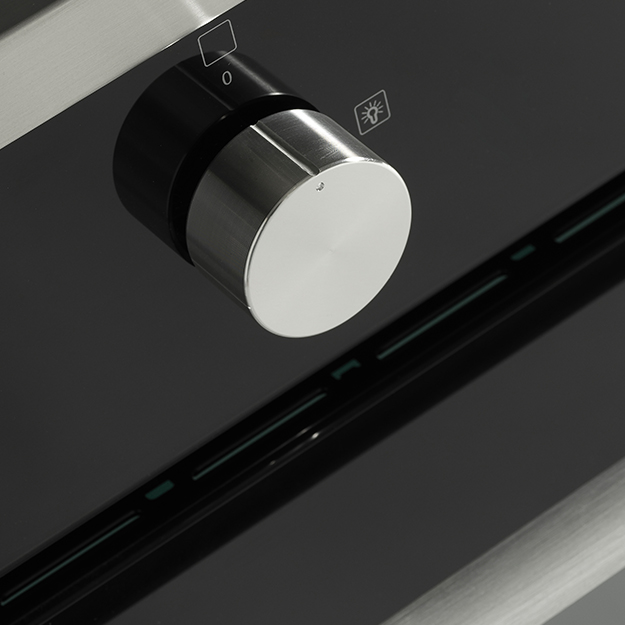
Gas Oven Components
Oven Cavity:
The oven cavity is the primary interior cooking chamber of the gas oven. It's the space where you place your dishes for baking, roasting, or grilling. Oven cavities come in various sizes and capacities, ranging from small ovens suitable for apartments to large ones designed for professional kitchens. The interior of the cavity is typically made of durable materials such as stainless steel or porcelain enamel, which are easy to clean and heat-resistant.
Burners and Heating Elements:
Gas ovens have burners or heating elements responsible for generating the heat required for cooking. There are usually two main types:
Bottom Burner: This burner is located at the bottom of the oven and is responsible for radiating heat upwards. It provides the primary source of heat for baking and roasting. The intensity of the heat can be adjusted using the oven's temperature control.
Grill Element: In most gas ovens, there's a separate burner located at the top of the oven cavity. This burner provides direct radiant heat and is used for grilling dishes like steaks, fish, or gratins.
Thermostat and Temperature Control:
Gas ovens are equipped with a thermostat and temperature control system that allows you to set and maintain the desired cooking temperature. The thermostat measures the temperature inside the oven cavity and communicates with the oven's gas valve to regulate the flow of gas to the burners. This control mechanism ensures that the oven maintains a consistent temperature throughout the cooking process, which is essential for precise and reliable results in baking and roasting.
Oven Racks and Shelving:
Oven racks and shelving provide support for your cookware and dishes within the oven cavity. They are typically made of sturdy materials like metal or chrome-plated steel to withstand the high temperatures of the oven. Oven racks can be adjusted to different heights, allowing you to position your dishes at the desired level within the oven. Some gas ovens come with additional features such as glide-out racks or roll-out shelving for easier access to your dishes.
Understanding these essential components of a gas oven is crucial for efficient cooking and maintenance. Proper care and use of these components contribute to consistent and delicious results when using your gas oven for a wide range of recipes and culinary creations.
Selecting the ideal gas oven for your kitchen can greatly enhance your cooking experience. It's a decision that involves several crucial factors, from size and energy efficiency to budget considerations and desired features. To help you make an informed choice, we've compiled a comprehensive table that highlights key considerations when choosing the right gas oven.
| Size and Capacity Considerations |
|
| Fuel Source (Natural Gas or Propane) |
|
| Energy Efficiency Ratings |
|
| Budget and Brand Options |
|
| Features and Extras |
|
In conclusion, finding the perfect gas oven entails a thoughtful evaluation of your kitchen space, energy source, efficiency requirements, budget constraints, and the features that align with your cooking style. With careful consideration of these factors and the information provided in our table, you can confidently navigate the diverse range of gas ovens available on the market. By selecting the right gas oven for your needs, you'll not only enhance your culinary capabilities but also enjoy the convenience and efficiency that a well-chosen appliance can bring to your kitchen.
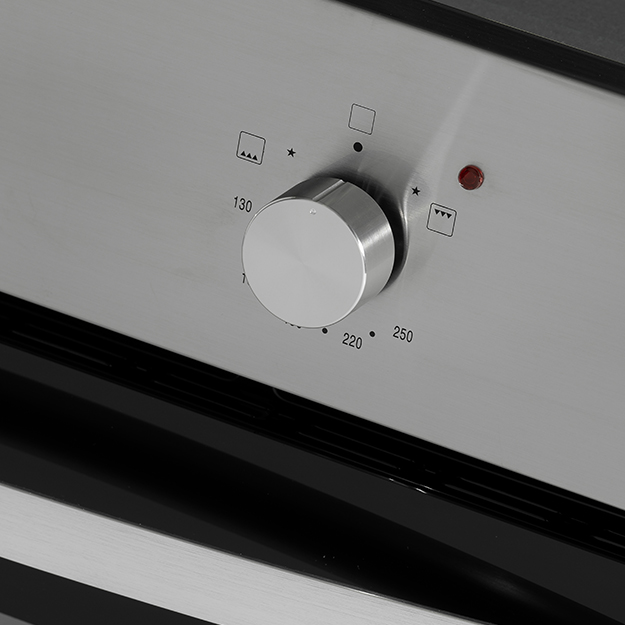
Gas Oven Installation
Safety Precautions:
- Safety should be the utmost priority when installing a gas oven. Before commencing installation, ensure that the gas supply is turned off at the main gas valve.
- Strictly adhere to the manufacturer's instructions and guidelines provided in the oven's user manual. These instructions are specific to your oven model and should be meticulously followed.
- It is imperative to enlist the services of a qualified Gas Safe registered engineer for the installation of a gas oven. Gas Safe engineers are certified professionals who possess the necessary expertise to ensure a safe and compliant installation.
Ventilation Requirements:
- Adequate ventilation is vital to disperse any potential gas leaks or fumes that may arise during oven operation. Make certain that your kitchen is sufficiently ventilated to meet safety standards.
- Install and use a cooker hood or exhaust fan in your kitchen to assist in removing excess heat, odours, and gases from the cooking area.
- Keep the oven's ventilation openings and exhaust ducts unobstructed to allow for efficient airflow.
Gas Line Connection:
- Gas ovens necessitate a dedicated gas supply line that complies with local building codes and regulations. Only a Gas Safe registered engineer is authorised to carry out this installation or gas line connection.
Electrical Requirements:
- Although gas ovens primarily rely on gas for heating, they often incorporate electrical components, such as ignition systems, timers, and digital displays.
- If you are replacing an existing gas oven with a new one, confirm that the electrical outlet and voltage align with the requirements of the new oven. If necessary, enlist the services of an electrician to make any necessary adjustments.
Professional Installation:
- It is not only strongly recommended but also a legal requirement in the UK to have a Gas Safe registered engineer perform the installation of your gas oven. They possess the expertise to ensure that all safety protocols are observed, and the oven is correctly connected to both the gas supply and electrical systems.
- Professional installation by a Gas Safe engineer not only guarantees safety but also helps prevent potential warranty issues that may arise from improper installation.
Testing and Inspection:
- Following installation, rigorously test the oven to confirm that it operates correctly and safely. Verify proper ignition, heating, and temperature control.
- Periodically inspect the gas lines, connections, and ventilation to ensure they remain in good condition and free from any obstructions.
By adhering to these installation guidelines and safety precautions and by enlisting the services of a Gas Safe registered engineer, you can ensure that your gas oven is correctly installed, operates safely, and delivers reliable cooking performance. Always place safety as the highest priority when working with gas appliances and consult a Gas Safe engineer if any doubts arise.
Operating a Gas Oven
Lighting the Pilot Light (If Applicable):
- Some older gas ovens may require manually lighting the pilot light. Consult your oven's user manual for specific instructions on lighting the pilot light. Typically, this involves turning the gas control knob to the pilot position, igniting the pilot with a long-reach lighter or match, and holding the knob down for a few seconds to ensure the pilot remains lit.
Preheating the Oven:
- Preheating is a crucial step to achieve consistent and accurate cooking results. Set the oven temperature to your desired level and allow it to preheat. Most ovens have an indicator light or signal to indicate when preheating is complete. The preheating time can vary depending on the oven's size and temperature settings.
Setting the Temperature and Cooking Times:
- After preheating, adjust the oven temperature to the level specified in your recipe. Use the temperature control knob or digital display to set your desired temperature.
- Set the cooking time using the timer on your oven or a separate kitchen timer. This ensures that you do not overcook or undercook your dishes.
Using the Grill Function:
- Most gas ovens offer a grill function that allows you to cook food from above using direct radiant heat. To use the grill function, switch the oven to grill mode and select your desired temperature or heat level.
- When grilling, place your food on a grill pan or an oven-safe dish positioned on the top rack. Keep a close eye on your food, as grilling can result in rapid browning and cooking.
Tips for Even Cooking and Temperature Distribution:
- Use oven-safe cookware that facilitates good air circulation. Avoid overcrowding the oven, as this can impede air movement and lead to uneven cooking.
- Rotate dishes halfway through the cooking time to ensure even browning and cooking.
- Employ an oven thermometer to verify that the oven temperature matches your setting. Ovens can occasionally have temperature variations that may require adjustments.
- Minimise the frequency of opening the oven door while cooking, as this can cause temperature fluctuations. Utilise the oven light and window to monitor progress instead.
- When baking, opt for light coloured or reflective bakeware to prevent excessive browning on the bottom of your dishes.
By following these guidelines for operating a gas oven, you can achieve consistent and delightful cooking results. Always refer to your oven's user manual for model-specific instructions and safety recommendations.
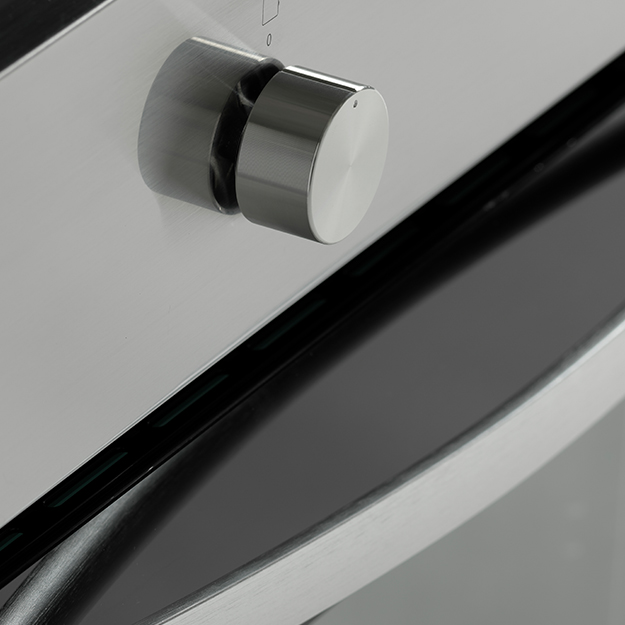
Gas oven cleaning and maintenance
Here's a guide on gas oven maintenance, including how to cleaning the oven interior, cleaning oven racks and accessories, managing spills and food drips, replacing oven gaskets and seals, and regular inspection and servicing:
Cleaning the Oven Interior
- Regularly clean the oven interior to prevent the build-up of grease and food residue.
- Allow the oven to cool before cleaning.
- Remove loose debris and crumbs with a damp cloth or sponge.
- For stubborn stains, use a mixture of baking soda and water or a commercial oven cleaner.
- Follow the manufacturer's instructions for cleaning products.
- Avoid using abrasive scouring pads or metal brushes, as they can damage the oven's interior.
Cleaning Oven Racks and Accessories
- Remove oven racks and accessories, such as trays and pans, and clean them separately.
- Soak racks in warm, soapy water and scrub away any residue with a non-abrasive sponge or brush.
- If racks are heavily soiled, you can use an oven cleaner or a mixture of baking soda and water.
- Rinse and dry thoroughly before reinserting them into the oven.
Managing Spills and Food Drips
- Address spills and food drips promptly to prevent them from baking onto the oven surfaces.
- Use a damp cloth or sponge to wipe away fresh spills as soon as they occur.
- For stubborn or burnt-on spills, use a plastic scraper or a spatula to gently remove the residue.
- Avoid harsh scraping that could damage the oven's interior.
Replacing Oven Gaskets and Seals
- Check the oven door gaskets and seals for signs of wear or damage.
- Damaged seals can lead to heat loss and inefficient cooking.
- If you notice any cracks, tears, or deformities in the gaskets or seals, consider replacing them.
- Consult your oven's user manual or contact a professional engineer for guidance on replacement parts.
Regular Inspection and Servicing
- Schedule regular inspections and servicing by a qualified technician.
- They can check for any gas leaks, ensure the oven is functioning correctly, and address any maintenance issues.
- Servicing may include adjusting the gas pressure, cleaning burner ports, and inspecting the ignition system.
- Regular servicing helps prolong the life of your gas oven and ensures safety.

Common Gas Oven Problems and Troubleshooting
My Gas Oven Has Uneven Cooking or Hot Spots:
- Problem: If your oven consistently cooks food unevenly or has hot spots, it can result in dishes that are overcooked in some areas and undercooked in others.
- Troubleshooting:
- Use an oven thermometer to verify the accuracy of the oven's temperature settings.
- Avoid overcrowding the oven by leaving space between dishes to allow for proper air circulation.
- Rotate dishes halfway through the cooking time to promote even cooking.
My Gas Oven Not Reaching the Desired Temperature:
- Problem: When your oven struggles to reach and maintain the set temperature, it can lead to longer cooking times and inconsistent results.
- Troubleshooting:
- Check if the oven door is properly closed and sealed.
- Verify that the thermostat is functioning correctly. If not, it may need replacement.
- Clean the oven's heating elements or burners, as a build-up of debris can affect heating performance.
My Gas Oven Pilot Light Issues:
- Problem: Some older gas ovens have pilot lights that may go out, resulting in difficulty in igniting the oven.
- Troubleshooting:
- Follow your oven's manual instructions for relighting the pilot light if it goes out. It typically involves turning the gas control knob to the pilot position and using a long-reach lighter or match to ignite the pilot.
- If the pilot light continues to go out, it may indicate a problem with the thermocouple or safety valve, which may require professional engineer repair.
My Gas Oven Has a Gas Smell:
- Problem: The presence of a gas smell or leaks in or around your oven is a serious safety concern that requires immediate attention.
- Troubleshooting:
- If you detect a gas smell, turn off the oven and gas supply immediately.
- Do not use any open flames or electrical switches, and open windows for ventilation.
- Contact a Gas Safe registered engineer to inspect the oven for gas leaks and address the issue.
My Gas Oven Makes Strange Noises or Has Odours:
- Problem: Unusual noises or odours coming from your gas oven can be concerning and may indicate underlying issues.
- Troubleshooting:
- Turn off the oven if you hear unusual noises or detect strange odours.
- Check for any visible signs of damage or loose components in the oven's interior.
- If the issue persists, contact a professional engineer to diagnose and repair the problem.
My Gas Oven Has Ignition Problems:
- Problem: If your gas oven struggles to ignite or you hear clicking sounds without ignition, it can disrupt your cooking.
- Troubleshooting:
- Ensure that the gas supply to the oven is turned on.
- Clean the igniter and burner ports to remove any dirt or debris that may obstruct the ignition process.
- If the igniter is damaged or not functioning, it may need replacement, which should be done by a professional engineer.
Addressing these common gas oven problems through troubleshooting and, when necessary, professional engineer repair can help ensure that your oven operates efficiently and safely. Always prioritise safety when dealing with gas appliances and consult experts if you encounter any issues.
Gas Oven Safety Tips
Here's a guide on gas oven safety, covering gas safety precautions, fire safety tips, carbon monoxide awareness, and childproofing with oven safety locks:
Gas Safety Precautions
- Always ensure that your gas oven is installed, maintained, and repaired by a Gas Safe registered engineer. They are qualified to work on gas appliances safely.
- Regularly inspect the gas supply line, connections, and hoses for any signs of wear, damage, or leaks. If you suspect a gas leak, immediately turn off the gas supply and contact a Gas Safe registered engineer.
- Keep flammable materials, such as paper towels, dishcloths, or curtains, away from the oven to prevent fire hazards.
- If you smell gas inside your home, open windows, avoid open flames, and evacuate the premises. Contact the gas emergency helpline or a Gas Safe registered engineer from a safe location.
Fire Safety Tips
- Install a fire extinguisher in your kitchen and ensure that it is easily accessible in case of a cooking-related fire. Familiarise yourself with its use.
- Use oven mitts and potholders when handling hot cookware or bakeware. Avoid using towels, as they can catch fire more easily.
- Never leave the kitchen unattended when cooking, especially when using the oven. Turn off the oven if you need to leave the area.
- In the event of a grease fire in the oven, do not open the oven door. Instead, turn off the oven and allow the fire to smother. Keep a lid nearby to smother small stovetop fires.
Carbon Monoxide Awareness
- Install carbon monoxide detectors in your home, especially near gas appliances like your gas oven. Carbon monoxide is a colourless, odourless gas that can be emitted from malfunctioning gas appliances.
- Regularly test and replace the batteries in your carbon monoxide detectors to ensure they are functioning correctly.
- If a carbon monoxide detector sounds an alarm, immediately evacuate your home and contact emergency services.
Childproofing and Oven Safety Locks
- Childproof your kitchen to prevent accidents. Use safety gates to keep young children out of the kitchen area when you are cooking.
- Consider installing oven safety locks or latches to prevent children from opening the oven door. These locks can help protect them from burns and accidents.
- Educate children about the dangers of hot ovens and stovetops, and teach them not to touch or play near them.
Gas oven safety is paramount to protect yourself, your family, and your home. Adhering to gas safety precautions, being prepared for potential fires, staying aware of carbon monoxide risks, and childproofing your kitchen can help ensure a safe and secure cooking environment when using a gas oven.
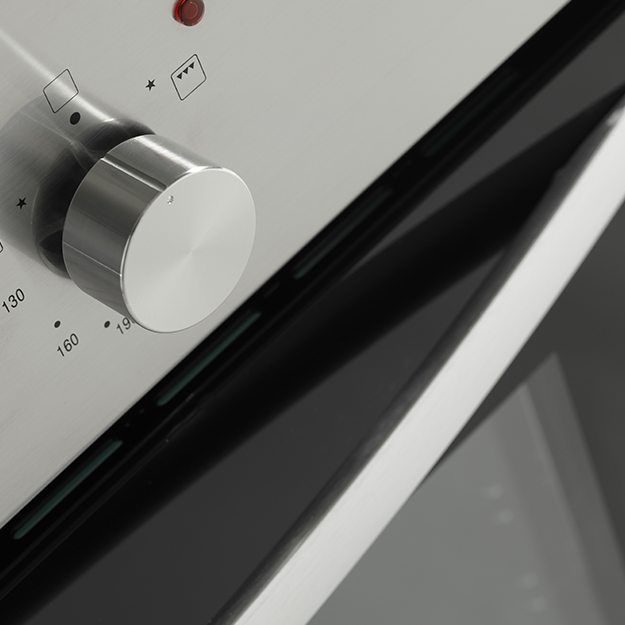
Cooking Techniques and Tips
Baking with a Gas Oven:
Baking Temperatures: Gas ovens can have slight temperature variations compared to electric ovens. Preheat the oven and use an oven thermometer to verify the accuracy of the temperature setting. Adjust as needed for consistent baking results.
Rack Placement: For even baking, place your baking trays or pans on the middle rack. Avoid placing them too close to the oven's top or bottom to prevent overbaking or undercooking.
Baking Stones: Consider using baking stones or pizza stones to distribute heat evenly and achieve crispy crusts for bread and pizza.
Ventilation: Some gas ovens have vents that release moisture during baking. Use this to your advantage when baking bread or pastries by placing a pan of water on the lower rack to create steam, promoting a crispy crust.
Roasting and Grilling:
Roasting: When roasting meats or vegetables, use a roasting pan with a rack to allow for air circulation and even cooking. Baste meats periodically to keep them moist and flavourful.
Grilling: For grilling, use the grill function provided with your oven or a suitable grilling pan. Ensure that the food is positioned close to the grill element for quick and even browning.
Using Convection Mode:
Convection Fan: If your gas oven has a convection mode, it can improve cooking efficiency. The convection fan circulates hot air, reducing cooking times and creating uniform heat distribution.
Temperature Adjustment: When using convection, you may need to lower the temperature by about 25°F (15°C) compared to conventional baking. Check the manufacturer's recommendations in your oven's manual.
Temperature Conversion (if switching from electric to gas):
If you're accustomed to cooking with an electric oven and switch to a gas oven, be aware of temperature differences. Gas ovens often have more variable temperatures and may require slight adjustments.
For baking, you may need to set the temperature slightly higher in a gas oven (about 15°C) to achieve the same results as in an electric oven.
Monitor your dishes during the first few attempts to determine the optimal temperature settings for your gas oven.
Mastering cooking techniques in a gas oven can yield delicious results. Pay attention to temperature accuracy, rack placement, and the use of convection mode to enhance your cooking and baking experience. If you're transitioning from electric to gas, be prepared to make slight adjustments to your recipes until you become familiar with your gas oven's behaviour.
Upgrading and Modern Features for Gas Ovens
| Modern Features for Gas Ovens | Description |
|---|---|
| Smart Ovens and Connectivity | Control and monitor your oven remotely using a smartphone or tablet. |
| Voice activation compatibility with assistants like Amazon Alexa or Google Assistant. | |
| Energy-Saving Technologies | Enhanced energy efficiency with advanced insulation and seals to retain heat. |
| Convection technology for even heat distribution, reducing cooking time and energy consumption. | |
| Advanced Cooking Modes and Pre-sets | Pre-set cooking modes for various dishes, simplifying temperature and time settings. |
| Multi-functionality, including baking, grilling, and steam cooking, for versatile meal preparation. | |
| Safety Features | Child safety locks to prevent accidental changes to cooking settings. |
| Safety shut-off features that turn off the gas supply in case of overheating or issues. | |
| Self-Cleaning Technology | Self-cleaning modes using high temperatures to remove food residues and grease, simplifying oven cleaning. |
| Touchscreen Displays and Digital Controls | User-friendly interface with touchscreen displays and digital controls for precise settings. |
| Customisation Options | Customisable settings for saving preferred cooking parameters, ensuring consistent results. |
| Eco-Friendly Features | Low-emission burners reduce environmental impact and enhance indoor air quality. |
When upgrading to a modern gas oven, consider these features to enhance your cooking experience, making it more convenient, energy-efficient, and safe. Choose the options that best suit your cooking needs and preferences to enjoy the benefits of a state-of-the-art appliance.
Conclusion and Final Tips
In this comprehensive guide to gas ovens, we've covered the full spectrum of these versatile kitchen appliances. From their historical evolution to installation, operation, and maintenance, we've explored every aspect. We've also delved into modern features, safety precautions, and cooking techniques.
In conclusion, gas ovens seamlessly blend tradition and innovation in the culinary world. Ensuring safety, mastering cooking techniques, and embracing modern features will elevate your cooking experience with these indispensable kitchen companions. With gas ovens, you can look forward to efficient and delicious gastronomic adventures in your home kitchen.
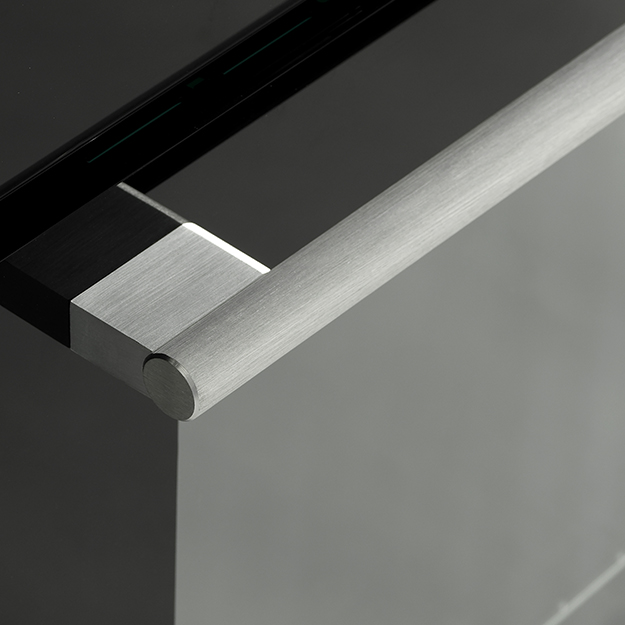
Frequently asked questions about Gas Ovens
What's the difference between a gas oven and an electric oven in terms of cooking performance?
- Gas ovens offer precise temperature control and even heat distribution, ideal for baking and roasting.
- Electric ovens may have more even heat but can be slower to preheat. The choice depends on personal preference and cooking needs.
How can I troubleshoot if my gas oven isn't heating properly?
- Check for common issues like a faulty igniter, a malfunctioning thermostat, or a blocked burner.
- If unsure, consult a professional technician for a thorough diagnosis and repair.
Are there any safety precautions I should take when using a gas oven?
- Ensure proper ventilation and avoid using the oven as a heating source for your home.
- Keep flammable items away from the oven and install a working carbon monoxide detector.
What is the average lifespan of a gas oven?
- The average lifespan of a gas oven is approximately 15-20 years with proper maintenance, but it can vary based on quality and care.
Can I convert a natural gas oven to LPG / propane (or vice versa)?
- Yes, many gas ovens can be converted from natural gas to propane or vice versa by changing burner orifices and adjusting the regulator.
- Consult the manufacturer's instructions or hire a professional technician for the conversion.
How often should I clean my gas oven, and what's the best way to do it?
- Regularly clean up spills as they occur and perform a more thorough cleaning every few months.
- Use a mixture of baking soda and water or a suitable oven cleaner following the manufacturer's cleaning recommendations.
Why does my gas oven have a strange odour when I use it? Is it normal?
- A slight odour during initial use is normal as residual manufacturing oils and coatings burn off.
- If the odour persists or is strong, it could indicate an issue with the gas supply or an appliance problem, requiring professional inspection.
What are some tips for baking and roasting in a gas oven to ensure even cooking and consistent results?
- Ensure proper preheating and use quality bakeware.
- Place dishes on the middle oven rack for even heat distribution.
- Use an oven thermometer to verify temperature accuracy and become familiar with your oven's characteristics for optimal results.
Top Selling Gas Ovens from MyAppliances
Explore our best selling gas ovens, combining tradition with innovation for exceptional cooking performance. With precise temperature control and even heat distribution, achieve perfect bakes effortlessly. Upgrade your kitchen with our gas ovens today.
Everything you need to know about Ovens
Everything you need to know about Ovens
Ovens are indispensable appliances in the modern kitchen, serving as versatile tools for a wide range of cooking and baking tasks. Understanding the ins and outs of ovens can greatly enhance your cooking experience. In our guides, we delve into everything you need to know about ovens, from their types and features to tips on using them effectively.
![The Ultimate Guide to Single Electric Ovens]()
This comprehensive guide is designed to empower you with the knowledge needed to make an informed decision when selecting a single electric oven for your kitchen. Throughout this guide, we will delve into various aspects of single electric ovens.
![The Ultimate Guide to Double Ovens]()
If you're in the market for a versatile cooking appliance that can revolutionise your culinary experience, you're in the right place. In this guide, we'll explore what double ovens are, how they differ from their single counterparts, and the numerous benefits they bring to your kitchen.
![The Ultimate Guide to Gas Ovens]()
In this comprehensive guide, we'll delve into the history and evolution of gas ovens, explore their advantages and disadvantages, and provide you with everything you need to know about selecting, installing, and maintaining these kitchen appliances.
![Ultimate Oven Buying Guide]()
Welcome to the comprehensive guide on electric ovens! Whether you're a passionate home cook or someone who simply enjoys preparing delicious meals, this guide is here to provide you with valuable insights into the world of electric ovens.
![The Ultimate Pyrolytic Oven Guide]()
A pyrolytic oven is a self-cleaning appliance that utilises high temperatures to incinerate food residue and grease, eliminating the need for manual scrubbing. During the cleaning cycle, which reaches temperatures as high as 400 to 500 degrees Celsius, the oven locks its door and converts organic matter into ash.
![The Ultimate Guide to Oven Functions]()
In this comprehensive guide, we delve into these multifaceted functions, revealing how ovens can elevate your cooking experience, ensure safety, provide convenience, and simplify maintenance.
![The Ultimate Guide to Fan Ovens]()
A fan oven, also known as a convection oven, is an appliance that utilises a fan to circulate hot air evenly, resulting in more uniform cooking, quicker cooking times, and precise temperature control.
![Pyrolytic, Catalytic or Steam Clean Ovens?]()
Can you confidently compare pyrolytic, catalytic, and steam-cleaning ovens if you were in the market for a new one? If not, you're not alone in this predicament! Nevertheless, it's a vital question to address, even though it won't be the sole determinant in your choice. Presently, the three primary cleaning modes - pyrolysis, catalysis, and steam cleaning - each possess their own merits and limitations.
![How to Clean an Oven Quickly, Easily and Thoroughly]()
In this article, we address frequently asked questions about oven cleaning and provide valuable tips and advice to assist you in achieving a sparkling and well-maintained oven.
![Choosing the Best Single Oven for Your Household]()
Choosing the best single oven for your household can be a daunting task, given the wide range of options available on the market. In this guide, we will provide recommendations for the best single oven for different types of households.
![Can I plug my oven into a normal socket?]()
Electric ovens have a kW rating that tells you how much power they use. For ovens under 3kW, it is perfectly acceptable to power them using a regular 13 amp plug and socket.
![What's the difference between a double oven vs single oven?]()
When searching for a new built-in oven, the abundance of options available can quickly lead to feelings of overwhelm. To navigate this extensive selection, it's crucial to begin by considering the type of built-in oven that would be the perfect fit for your home.
![What is a good size oven capacity?]()
Oven capacity refers to the internal volume or space available inside an oven for cooking and baking purposes. The average capacity of a single oven is typically around 60 litres.
![Do all ovens have a grill?]()
The availability of a grill feature in an oven depends on the specific model and type of oven. While many ovens are designed with a built-in grill element, there are also ovens that are solely focused on baking and do not include a grill function.

